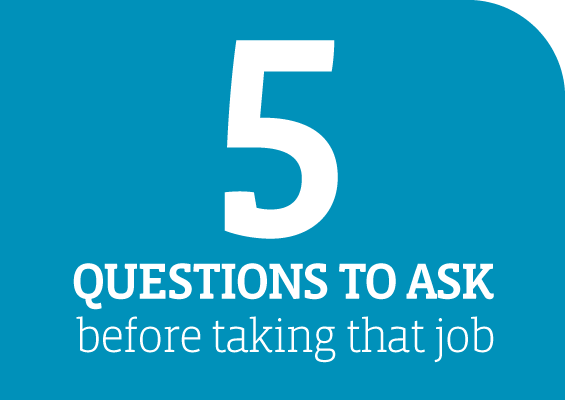The future of the IT industry depends in great part on the type of people we can bring in. Are the next generation’s thinkers, innovators, and entrepreneurs really interested in high tech and, if so, what can we all do to ensure they make a commitment to stay?
That question may seem rather worldly in nature, but there is a real challenge ahead. Some IT employment and retention trends are skewing the wrong way. The percentage of women and minorities pursuing STEM-related school curriculums continues to lag, which in effect limits the pool of future talent pool for tech companies. In fact, according to a recent US News report, that gap may be widening.
Even though the number of graduates with tech-related degrees continues to grow, the demand is increasing exponentially, outstripping the available supply. Recruitment and retention remains a major issue for IT firms, especially for those who must compete with larger businesses with bigger pocketbooks and more comprehensive benefit packages. In other words, the struggle to find, hire and retain quality people looks to be a long-term concern for many channel organizations.
Change has become a necessity. Proactive recruitment is now a must for any channel company looking to expand. Incentives and benefit packages must be enhanced, if not scrapped and replaced. Most of all, IT industry employers need to build environments that entice and encourage a new generation of workers.
Despite all the pessimism, that last point may not be as difficult as some have suggested. With a little time and focus on the things that motivate the younger, as well as more tenured workers, IT firms can put themselves in a better position to compete for talent. A multi-generational approach is needed.
That sounds easy enough, right? Unfortunately, most IT professionals are not as skilled at HR and recruiting as they are with remote monitoring, security and helpdesk support. Compounding the issue is that those who do the hiring are frequently of a different generation. In most IT businesses, the management teams consist of the founders and more tenured employees who may not be as “in tune” with the latest recruits’ needs and desires. When that disconnect is large enough, they may end up losing good employees and, in some cases, valued clients.
The Rising Tide Lifts All Boats
Every generation gets knocked by seemingly wiser elders. Many of us may have uttered phrases that included the words “kids these days” or complained about the latest choices in music. At the end of the day, the differences between generations have more to do with technology and societal standards than the people themselves. Great employees are there if you know where to look — and how to connect with them.
It’s all about respect and understanding. Millennials, just like the Gen X and the Baby Boomers before them, want to succeed. Each group has its dreamers and innovators, as well as a relatively small faction who are less interested in work and giving back to society.
The formula for channel success is to focus on the former. Members of the CompTIA Future Leaders Community fit that bill. This collaborative peer group is comprised of young IT professionals willing to inspire, mentor and create new opportunities for the next generation. Not just talking, but working diligently to bridge the industry age gap. Millennials gain access to materials they need to build viable career, and the older generation gains insight on what it takes to recruit and retain them. Any tech professional can take part in the conversation.
Lessons Shared
Today’s tech entrepreneurs need to change their habits. The best and brightest candidates may want to spend just as much time discussing the work environment and flex-time as they do covering salary and benefits. The latter needs to be competitive — great IT talent is in high demand — but companies that go the extra mile to ensure their success will fare better than those that don’t.
Despite the rumors, Millennials don’t want to be coddled any more than employees from previous generations. And the return on investments made to ensure a more nurturing and supportive work environment will likely improve job satisfaction for all ages.
Millennial recruits do tend to respond better to employers that offer a clear list of job responsibilities and objectives, and not lured as much by a traditional 9-5 schedule. The ability to leave a little early when their tasks are complete to do something more exciting is an attractive option. That doesn’t mean they shirk the responsibility of staying late when the work isn’t complete, but living life instead of watching the clock is a more enticing opportunity.
In general, the latest generation is also more comfortable with technology than their older peers. Companies that embrace automation in the workplace may be more attractive to these candidates, and the tech-savvy recruits are usually more willing to help peers adopt the latest innovations. That’s a win-win for the organization.
Whether you’re new to the industry, or have been around a few years, everyone benefits when we bridge the generational gap. Encourage others to consider an IT career. Gain a better understanding of co-workers and peers. Understand the interests of middle and high school students, and address the misconceptions they may have about our industry and the job opportunities and requirements. The resulting “rising tide” will move both the industry and those who work in it, forward.
Brian Sherman is Chief Content Officer at GetChanneled, a channel business development and marketing firm. He served previously as chief editor at Business Solutions magazine and senior director of industry alliances with Autotask. Contact Brian at [email protected]

 Add CompTIA to your favorite RSS reader
Add CompTIA to your favorite RSS reader

